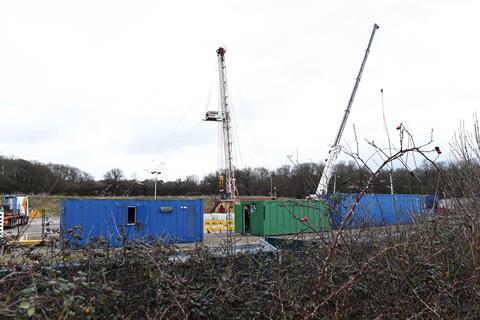‘This is not a climate change case,’ Surrey County Council told the Supreme Court when explaining that an oil company need not disclose the impact of burning the oil it wants to drill in its environmental impact assessment (EIA) for a planning application.

That contrasts starkly with a recent court ruling in Norway (see tinyurl.com/3n5nkdam), which found that the emissions from burning the oil drilled are ‘an inevitable and intentional effect from the project’ and so must be included.
So, who is right?
When Horse Hill Developments applied for planning permission for four oil wells in Surrey that would extract 3.3 million tonnes of crude oil over 20 years, it had to submit an EIA to Surrey County Council.
In this assessment, no account was taken of the climate impact of burning the oil.
Just drilling for the oil would release an estimated 112,000 tonnes of CO2 equivalent. Burning the oil would release more than 10 million tonnes of CO2 into the atmosphere. But that was not in the EIA and was excluded from the planning report that went to Surrey councillors.
The council gave the go-ahead on partial and incomplete information – so argues Sarah Finch, who has taken the case to the Supreme Court, which will rule on the case shortly.
Initially, the council recommended that the EIA should cover ‘the global warming potential of the oil and gas that would be produced’. But it then backed down, leading to what has been a four-year legal battle.
So should an EIA take account of all of the environmental impact, or just the impact at the site?
In court, Lord Leggatt commented: ‘It sounds like a piece of medieval sophistry to me… You extract the oil and then you sort of blank out what’s going to happen to it afterwards.’

Scope 3 emissions reporting
Increasingly, businesses are voluntarily disclosing emissions from suppliers and customers – so-called Scope 3 emissions – to give a transparent account of the whole of their real-world impact on the climate.
Over 4,200 companies adopted the Science Based Targets initiative’s Net-Zero Standard and 96% have published Scope 3 targets. Firms with £4.4tn of purchasing power requested that 23,000 suppliers disclose their emissions.
This year, the European Union will introduce the European Sustainability Reporting Standards. These will compel around 50,000 companies based in the EU and others trading there to publish their Scope 3 emissions.
With the overwhelming acknowledgement that Scope 3 emissions are a vital indicator of environmental impact, how has the UK planning process been left behind? The planning system is one of the key means by which the carbon impacts of development can be assessed and fed into higher-level assessment and disclosure frameworks.
We must get to net zero. However, we need a joined-up system of policy and regulation rather than one which is pulling in opposite directions.
The government’s legally binding climate targets and international obligations must filter down to project-level decisions, so companies are required to assess the emissions from the use of their products.
As Rishi Sunak promised at the COP26 climate talks in Glasgow, the government will make companies publish transition plans showing that they have a credible pathway to net-zero emissions by 2050, with a clear milestone at 2030. So they will have to assess their Scope 3 emissions at project level. This transparency is also critical for investors to understand the extent of the climate risks to which they may be exposed – and to deliver on their own climate goals.
The Norwegian court ruled that: ‘If combustion emissions are not covered, this will mean that the provisions in the [EIA] directive on assessment of indirect climate impacts from petroleum operations will in practice be without real content.’
The Norwegian court took a principled but robust position on the same law as the one the UK Supreme Court is due to rule on any day now. There is now legal space and a clear need to join up the regulatory system to ensure project-level decisions are in line with national and international commitments to tackle climate change.
The argument that won the original UK court case and at the Court of Appeal is akin to a tobacco company saying they are not responsible for cancer deaths, as it is only when you burn a cigarette that it becomes dangerous.
But whatever happens in court, the government has a golden opportunity to ‘join up’ the system when it finally introduces the new Environmental Outcome Reports that will replace EIAs.
Jake White is head of legal advocacy at environmental charity WWF-UK





























No comments yet